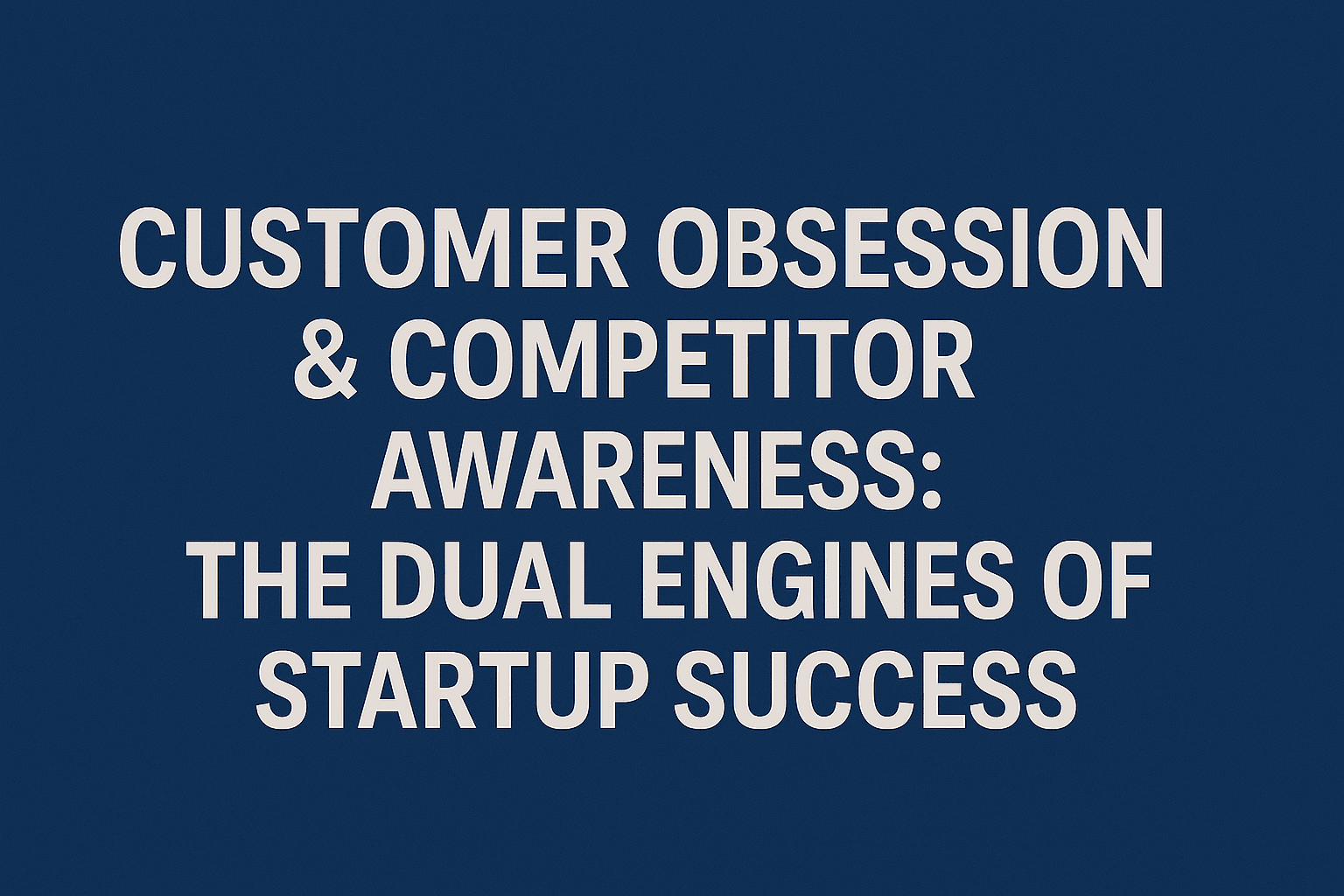Customer Obsession & Competitor Awareness: The Dual Engines of Startup Success in 2025

In 2023, a McKinsey study revealed that customer-centric companies are 60% more profitable than those that aren’t. Yet, the same year, 41% of startups admitted to failing because they underestimated competitors (CB Insights). The lesson? Customer obsession wins battles, but competitor awareness wins wars.
The most successful founders in 2025 don’t choose between the two—they master both. Here’s how to build a customer-obsessed business while staying steps ahead of rivals, and why tools like RivalSense are critical for balancing these priorities.
What Customer Obsession Really Means (And How to Nail It)
Customer obsession isn’t just “good service” or NPS surveys. It’s a DNA-level commitment to solving unmet needs—often before customers articulate them.
Step 1: Deep Discovery Beyond Demographics
- Go beyond “Who are they?” Ask, “What keeps them awake at night?”
- Tactic: Host quarterly “empathy labs” with 10-15 customers. Use open-ended questions like, *“What’s one task you waste 3+ hours/week on?”*
- Example: Notion’s early team embedded themselves in Reddit communities to discover users’ frustration with fragmented productivity tools.
Step 2: Build Feedback Loops into Your Product
- Tactic: Integrate micro-feedback widgets (e.g., Hotjar polls) at key user journey points.
- Pro Tip: Reward users who submit feedback with early access to features.
- Example: Slack’s “/feedback” command lets users report issues without leaving the app—resulting in 80% of their product updates.
Step 3: Personalize Without Creeping Out Users
- Tactic: Use AI to analyze behavior patterns, but keep humans in the loop.
- Example: Spotify’s “Discover Weekly” feels personal because it blends algorithmic picks with editorial curation.
Step 4: Empower Every Employee as a Customer Advocate
- Tactic: Share raw customer videos (complaints, praise) in all-hands meetings.
- Example: Zappos once sent a customer 10 free pairs of shoes after a call-center rep overheard her mention foot pain.
Why Competitor Tracking Isn’t “Cheating”—It’s Survival
Ignoring competitors is like driving with a blindfold. Here’s what you miss:
- Pricing Landmines: A rival’s sudden 30% discount could crater your margins.
- Feature Gaps: 62% of users switch tools if a competitor offers one critical feature they lack (G2).
- Regulatory Risks: GDPR fines cost businesses $1.3B in 2023. If competitors adapt faster, you’re exposed.
How to Track Competitors Without Losing Customer Focus
1. Automate the Grunt Work
- Problem: Manual tracking (Google Alerts, social scrolling) eats 8+ hours/week.
- Solution: Tools like RivalSense monitor competitors’ pricing pages, regulatory filings, and product launches automatically.
- Example: RivalSense users get alerts like, “Competitor X added AI chatbot to pricing tier 2—likely targeting SMBs.”
2. Focus on Signals, Not Noise
- Ignore: Competitors’ blog posts about office parties.
- Track:
- Job postings for roles like “Head of AI” (hinting at product bets).
- Website changes to investor relations pages (fundraising signals).
- Patent filings (future roadmap clues).
3. Benchmark Against Customer Needs
- Tactic: Map competitor moves to your customer feedback.
- If rivals add a feature your users haven’t requested, stay focused.
- If they fix a pain point your users do complain about, prioritize it.
RivalSense: The Bridge Between Customer Love and Competitive Edge
For founders juggling customer obsession and market threats, RivalSense delivers:
✅ Competitor Alerts That Matter: AI filters out noise, flagging only strategic moves (pricing, leadership, compliance).
✅ Customer-Centric Insights: See how competitors’ changes align (or clash) with your users’ needs.
✅ Time Savings: Reclaim 10+ hours/week spent on manual tracking.
Case Study: A healthtech startup used RivalSense to spot a competitor’s FDA trial delay. They accelerated their own trial timeline, securing a partnership with 300+ clinics.
The Balancing Act: Obsess, But Don’t Obsess Alone
Customer obsession requires deep emotional investment. Competitor tracking demands cold objectivity. Trying to do both manually burns teams out.
RivalSense acts as your 24/7 competitive radar, freeing you to focus on what truly matters: building what customers need, not just reacting to rivals.
👉 Start Your Free Trial Today
No credit card. Get competitor insights in 5 minutes.
Focus on Customers, Let RivalSense Handle the Rest
Final Word:
In 2025, the winners won’t be the most customer-obsessed or the most competitor-aware—they’ll be those who master both.
Your customers deserve your heart. Your competitors deserve your scrutiny. With the right balance, you’ll give neither an inch.
